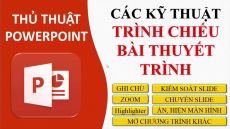Read the following passage and mark the letter A, B, C or D on your answer sheet to indicate the correct word and phrase that best fits each of the numbered blanks
Câu 31 : WAYS OF SOCIALIZING To attract someone’s attention so that we (31)…….. speak to that person, we can use either verbal or non-verbal forms of communication. Let us look at non-verbal communication in English. Probably the (32)…….. common way of attracting someone’s attention is by waving. For example, if we are at a noisy party and see a friend come in the door about 20 metres away, we might raise our hand and wave to her as a signal that we see her. But how hard can we wave in a situation like this? Suppose you are (33)… …. the airport, and you see your brother get off the plane and begin walking toward you. If you are excited, you might jump up and down and wave as hard as you can …(34)…… his attention. This is the instance where big, obvious non-verbal signals are appropriate. There are, however, some social situations where smaller non-verbal signals are more appropriate. In a restaurant, for example, if we want to attract the (35)………….of our waiter, we have several choices. We can wait until he passes near us, catch his eye, and nod slightly to let him know we would like him (36)….…… to our table. Or we can raise our hand slightly to show that we need assistance. We do not whistle or clap our hands to get the person’s attention. That is considered impolite and even rude. In most social situations where some informality (37)……… allowed, a brief raise of the hand and a small wave is fine. For instance, if you are walking across the schoolyard and see your teacher approaching you, a small friendly wave to attract his or her attention is appropriate. Once you’ve got your friend’s attention, you shouldn’t point at the person or thing you want her to look at. A slight nod will do. Pointing at someone is usually (38)………….. rude. Of course, there are times when pointing is (39)……….. acceptable, such as when a teacher wants to get someone’s attention in class. The teacher often points (40)……. the student and says, “David, would you read the next sentence, please?” Pointing here is not impolite; it’s simply a way to get someone’s attention. (31) __________
Hãy suy nghĩ và trả lời câu hỏi trước khi xem đáp án
Lời giải:
Báo sai"Might" diễn tả khả năng xảy ra nhưng không chắc chắn lắm.
Câu 32 : (32) __________
Hãy suy nghĩ và trả lời câu hỏi trước khi xem đáp án
Lời giải:
Báo saiCấu trúc so sánh nhất "the most common way": cách được yêu chuộng, phổ biến nhất
Câu 33 : (33) _________
Hãy suy nghĩ và trả lời câu hỏi trước khi xem đáp án
Lời giải:
Báo saiairport: ở sân bay dùng giới từ "at"
Câu 34 : (34) _________
Hãy suy nghĩ và trả lời câu hỏi trước khi xem đáp án
Lời giải:
Báo saiSau can + V
Câu 35 : (35) _________
Hãy suy nghĩ và trả lời câu hỏi trước khi xem đáp án
Lời giải:
Báo saiattract the attention: thu hút sự chú ý
Câu 36 : (36) ___________
Hãy suy nghĩ và trả lời câu hỏi trước khi xem đáp án
Lời giải:
Báo saiSau cấu trúc "would like" cần một to V
Câu 37 : (37) ________
Hãy suy nghĩ và trả lời câu hỏi trước khi xem đáp án
Lời giải:
Báo sai"some informality": số ít nên ta dùng "is"; vì trong câu là thì hiện tại đơn nên ta không dùng "was"
Câu 38 : (38) ________
Hãy suy nghĩ và trả lời câu hỏi trước khi xem đáp án
Lời giải:
Báo saiCấu trúc câu bị động thì hiện tại đơn.
Câu 39 : (39) _____________
Hãy suy nghĩ và trả lời câu hỏi trước khi xem đáp án
Lời giải:
Báo saibe + Adv + Adj
Câu 40 : (40) ___________
Hãy suy nghĩ và trả lời câu hỏi trước khi xem đáp án
Lời giải:
Báo saipoint to sb: chỉ tay vào ai
Đề thi giữa HK1 môn Tiếng Anh 12 năm 2020
Trường THPT Nguyễn Huệ














